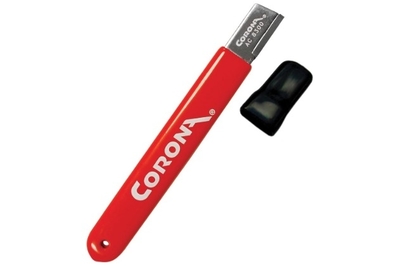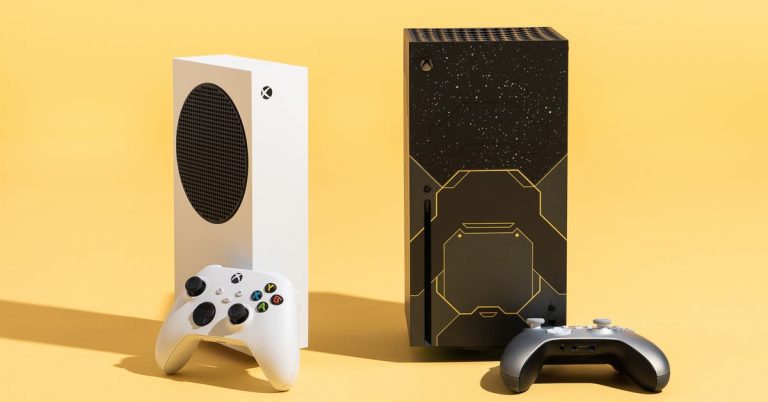Behold the Satisfying Steel-Peeling Action of This Garden-Tool Sharpener
By my count, there are at least a dozen different types of sharpeners that you can use to touch up your cutting tools. Some look like modified versions of a basic kitchen-knife sharpener. Other options include old-school whetstones, power tools of all shapes and sizes, and even whetstone attachments for power tools. Simple metal files, even the ones that come in a lot of popular multi-tools, can work too.
But when I was working on our guide to gardening tools for beginners, one slick, cheap little tool kept popping up again and again in my research and all over gardening YouTube: the Corona AC 8300 Carbide Sharpening Tool.
It stood out to me as probably the smallest, simplest sharpening tool I’d seen, and it’s one of the best-selling and highest-rated tools of its type at major retailers. It typically costs about $8, and it looks like a frozen-pop stick wrapped in red rubber, with a black safety cap to cover its inch-long carbide scraper.
I’ve been on a bit of a sharpening kick lately after realizing that I’ve owned most of my tools long enough for them to lose their factory edges. So I picked up an AC 8300 alongside some standard sharpeners that everyone should consider: a set of bastard files and a whetstone (and, uh, a scythe peening jig, but that’s another story).

I found good uses for all of them, and I’m going to keep the entire haul. But the Corona sharpener has been a natural fit in my arsenal, especially to touch up smaller cutting edges that don’t need to be razor-sharp.
The business end of the AC 8300 is made of carbide, a material that’s not quite as tough as diamond but much harder than the steel that most tools are made of. Whereas sharpeners usually have a gritty, textured surface that gradually grinds out a well-honed edge, the AC 8300 can shear off an entire layer of dull, overworked steel in a single pass.
The AC 8300 made short work of the blunt factory edge on my stirrup hoe. Where I’d dinged up the steel on rocks, the AC 8300 smoothed the dents with just a few scrapes. After just a few minutes, the hoe was keen enough to actually cut weeds, rather than rubbing them to death.
When I touched up a set of pruners, the steel-peeling action didn’t look quite as dramatic, but the AC 8300 still put a fresh edge on the tool that made it easier for me to chop small branches without squeezing as hard or mashing the bark.
Scraping away so much metal isn’t particularly elegant, and it isn’t the best way to hone the kind of precise edge that you need on a knife, or arguably even a lawn mower blade. But for lopping, chopping, pruning, and weeding, it’ll do fine.
Jackie Reeve, a writer here at Wirecutter who is also working toward her Master Gardener certification, owns several sharpeners, including some file-type tools. “But I end up reaching for the little Coronas more,” she said. “I like that it has a lid, that I can throw it in a tool bag or easily take it with me. And actually, the small surface makes me more precise, even with my big loppers, because I’m short and have kid-sized hands. I just get better control with a smaller tool.”

I have giant man hands, and I still preferred the AC 8300 in most cases. When I touched up the teeth on my battery-powered hedge trimmer, one side with the AC 8300 and the other with a round bastard file, I preferred the Corona tool by far. It produced a fresh edge, with a lot less fuss. Although I won’t need to do this type of maintenance often, I’d still rather have a sharpener that can squeeze into tight spots and scratch out a fresh edge with a few short strokes.
Amazon and other generalist retailers have listings for knockoffs of the AC 8300. I didn’t try any. They might work fine, but when the genuine article — likely a lifetime tool, if you don’t lose it in the compost pile — costs $8, why take a chance on a copy that might be lousy?
If you already have a sharpening tool that you like and you’re comfortable using, the AC 8300 probably wouldn’t change your life. Plenty of avid gardeners prefer to use milled files, for example. And if you already have a belt grinder or other power tool, you might as well keep using that. But if you’ve skipped out on sharpening in the past, this pocket tool makes it really easy to get started.
This article was edited by Megan Beauchamp and Catherine Kast.







